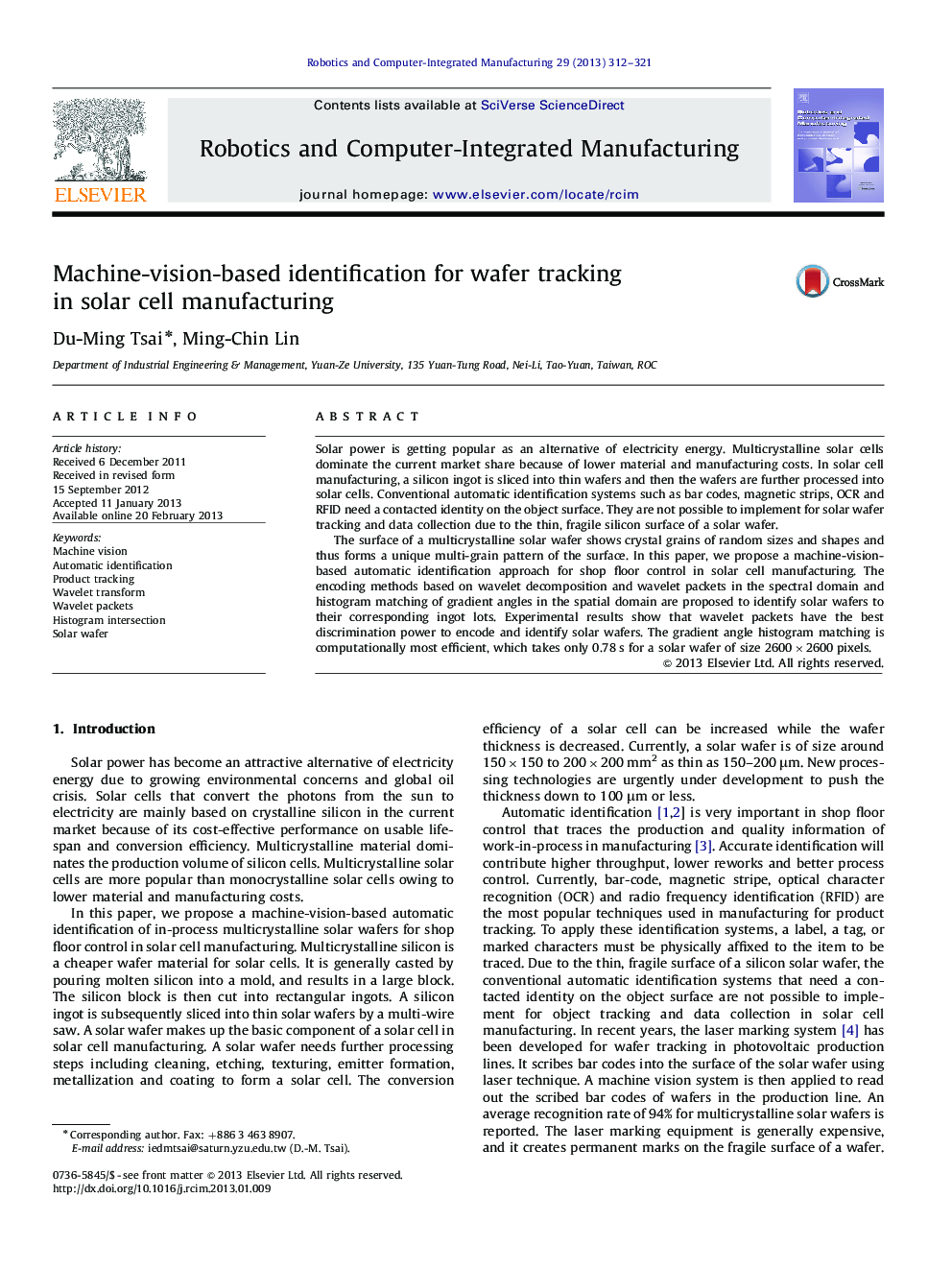| Article ID | Journal | Published Year | Pages | File Type |
|---|---|---|---|---|
| 413632 | Robotics and Computer-Integrated Manufacturing | 2013 | 10 Pages |
Solar power is getting popular as an alternative of electricity energy. Multicrystalline solar cells dominate the current market share because of lower material and manufacturing costs. In solar cell manufacturing, a silicon ingot is sliced into thin wafers and then the wafers are further processed into solar cells. Conventional automatic identification systems such as bar codes, magnetic strips, OCR and RFID need a contacted identity on the object surface. They are not possible to implement for solar wafer tracking and data collection due to the thin, fragile silicon surface of a solar wafer.The surface of a multicrystalline solar wafer shows crystal grains of random sizes and shapes and thus forms a unique multi-grain pattern of the surface. In this paper, we propose a machine-vision-based automatic identification approach for shop floor control in solar cell manufacturing. The encoding methods based on wavelet decomposition and wavelet packets in the spectral domain and histogram matching of gradient angles in the spatial domain are proposed to identify solar wafers to their corresponding ingot lots. Experimental results show that wavelet packets have the best discrimination power to encode and identify solar wafers. The gradient angle histogram matching is computationally most efficient, which takes only 0.78 s for a solar wafer of size 2600×2600 pixels.
► A machine-vision-based identification method is proposed for solar wafer tracking. ► The encoding methods are based on wavelet decomposition and wavelet packets. ► Wavelet packets have the best discrimination power to encode and identify solar wafers.
